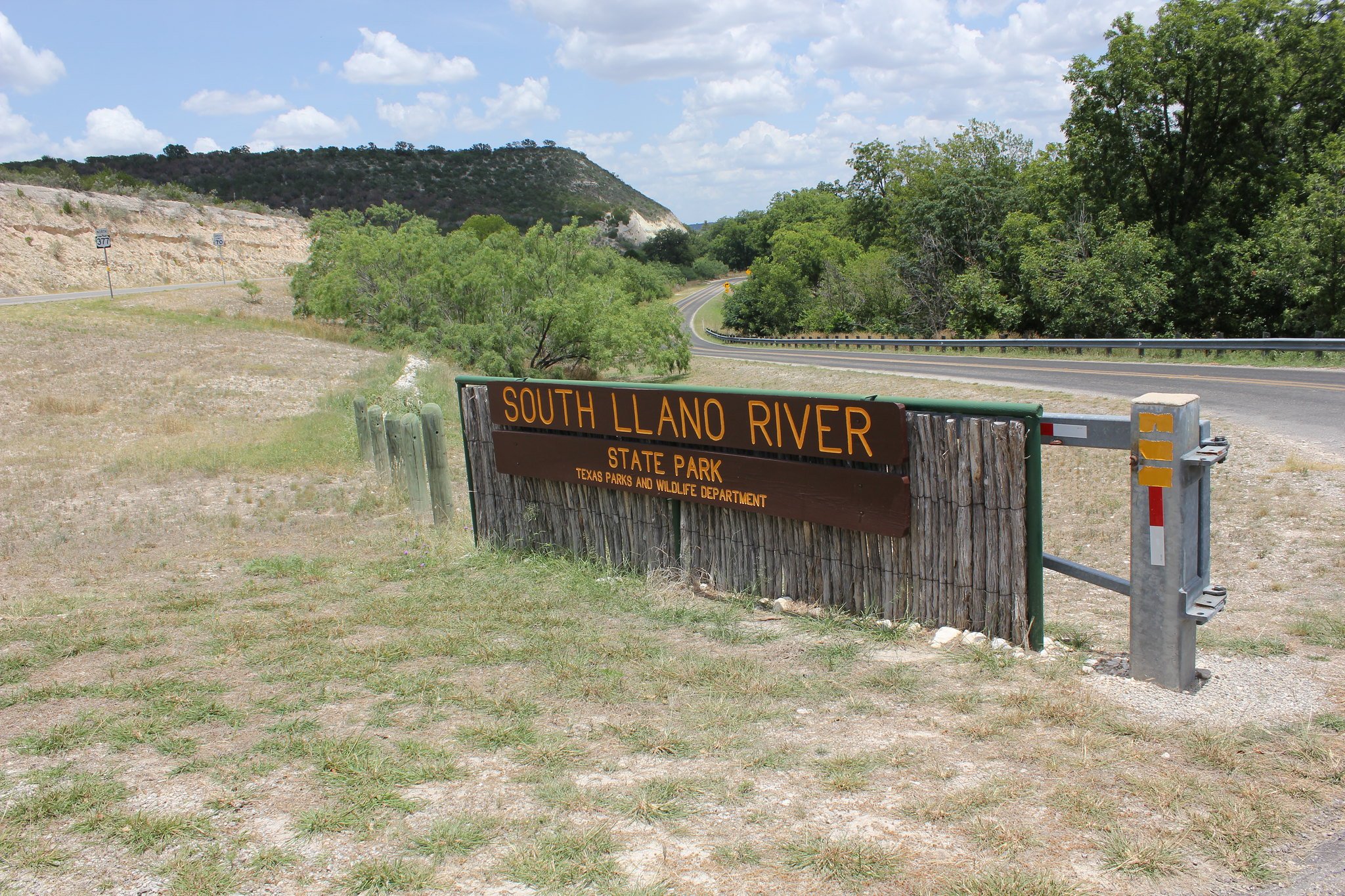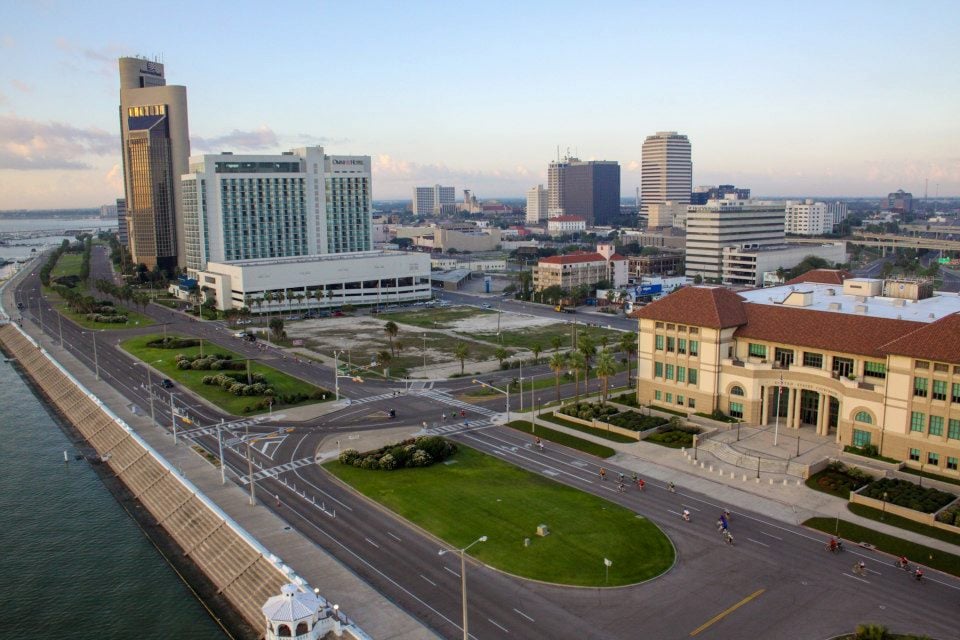
Texas Is Watering Down Federal Infrastructure Funds
The state needs to invest more than $60 billion in water infrastructure over the next 50 years—instead, the Legislature spent federal money on cops, jailers and cybersecurity.

A ticking time bomb lies at the bottom of the Llano River, near a small town called Junction. In 2018, major flooding across the watershed overwhelmed the region’s water infrastructure as high waters brought with them silt, dirt and debris. Nearly three years later, the exposed sewer lines under the river still haven’t been buried properly. When the next flood rips through the Hill Country, those lines could rupture, an expert says, causing millions of gallons of raw sewage to flow into the Llano River and other nearby sources of drinking water.
That’s just one potential problem that Katherine Romans, the executive director of conservation group Hill Country Alliance, was hoping to stave off by securing a portion of federal stimulus money for water infrastructure projects. The Biden initiative, called the American Rescue Plan Act, provided $1.9 trillion in no-strings-attached money for states to invest in infrastructure projects, public health, and other needs that might have fallen to wayside due to COVID-19- related budget shortfalls. “These communities are on the brink of losing their drinking water supply or having catastrophic failures with wastewater lines,” she says. Across the Hill Country, water infrastructure systems are nearing 100 years old and are in need of repairs for leaks as well as technological upgrades.
But the Texas Legislature declined to allocate any of those federal dollars to water infrastructure. The $1.9 trillion bill provided states a pool of money to invest in infrastructure projects, public health, and other needs that might have fallen to wayside due to COVID-19-related budget shortfalls. Texas received nearly $16 billion through the American Rescue Plan Act. The stimulus was one of President Joe Biden and Congressional Democrats’ top priorities this year.
But after shoring up healthcare funding and other pandemic-related issues, legislators proposed a bill that will dole out most of the rest of the funds to give raises to employees at agencies that oversee state troopers and prisons, along with cybersecurity. Legislators ignored a pressing need to invest in dams, pipelines and treatment plants.
Across Texas, water infrastructure systems have fallen into disrepair. The American Society of Civil Engineers recently gave Texas’ drinking water infrastructure a C- rating, and its waterwater a D. (The organization gave the nation as a whole a similar unsatisfactory grade). In February, when a severe winter storm knocked out power in Texas and other states for days on end, millions of residents lost access to running water, too; treatment plants went offline and burst pipes triggered widespread water contamination scares. The state’s aging infrastructure leads to more than 1,000 boil water notices, warning residents that their water is unsafe to drink without boiling, across the state even in normal years, according to the ASCE report. Austin, for example, can lose billions of gallons a year—water that never makes it to a customer or treatment plant—due to leaky distribution pipes that carry water from treatment plants to homes and businesses.
“About a third of our waterways are polluted with fecal bacteria. We have significant problems with droughts and floods, and there are some communities that don’t have access to running water,” says Luke Metzger, the executive director of Environment Texas. “Our water infrastructure is not as resilient as it needs to be, especially in the face of the climate crisis. There was a missed opportunity [in the last legislative session] to invest in solutions that could have made Texans less vulnerable to disruptions like we saw in February.”
On top of that, Texas’ population is among the fastest-growing in the nation, and demand for water is expected to skyrocket in coming decades. The cost of simply keeping up with growing needs and developing new, long term water sources is massive: $63 billion over the next 50 years, according to the Texas Water Development Board, a state agency.
Some of the ARPA funding could have shored up existing programs outlined in the state’s water plan. It was also an opportunity to secure grant funding for technological updates or conservation programs that haven’t been widely adopted in Texas, says Amanda Fuller, the director of the National Wildlife Federation’s Texas Coast and Water Program. The National Wildlife Foundation and a coalition of allies, including urban groups focused on equity, and rural groups like the Hill Country Alliance, advocated that the Legislature allocate $2.1 billion from ARPA towards a wide variety of programs that could have helped increase resiliency in local communities whose water supplies are being stressed by climate change. Money could have been used to fix ancient pipes, build new storage tanks or reservoirs, and purchase backup generators in case of future power outages. “We really were thinking, surely some part of water infrastructure will get attention with this money,” Fuller says. “But neither [the] House nor Senate has a dime for water.”
A significant chunk of the ARPA funding—more than $10 billion—went towards the state’s unemployment fund, as well as hospital staffing and healthcare. But environmental groups such as the Sierra Club criticized other legislative decisions, such as allocating $3.8 billion for salaries of employees at the Department of Criminal Justice, which oversees prisons, and the Department of Public Safety, the umbrella agency for state troopers and border security personnel. Another $200 million went toward cybersecurity programs.
Existing state and federal funds for water infrastructure projects are nearly always maxed out, advocates say. “Any investments we can do, and any programs that open more access for small and rural communities is well worth it,” Romans says, making the Legislature’s decision to ignore water infrastructure all the more disappointing. The grant-based funding in particular would have provided more equity in where new water projects get built: It was an opportunity for smaller utilities to invest without raising water rates for customers. Rural water districts, for example, often can’t afford to raise rates for customers in order to build new storage tanks or treatment plants. The lack of funds can make it more difficult for smaller cities to adequately clean drinking water. “Many municipalities are on fixed incomes,” Romans says. “That is to say, they have an aging population that can’t afford to pay more for their [water bill], or they may be losing population.”
Senator Jane Nelson, a Republican from Flower Mound who is also the chair of the Senate budget writing committee, had not returned a request for comment on this story by press time.
Advocates are hopeful that when Biden’s federal infrastructure spending bill is approved, it will provide the state another opportunity to tap into much needed funding. The $3.5 trillion infrastructure bill, dubbed “Build Back Better,” is still being debated in Congress, and it’s too early to tell how much of that money will trickle down to Texas. It’s impossible to know exactly how much of that will be carved out for water infrastructure specifically, but Romans can predict one thing: “We will have far more demand and need for investments than we will have dollars to spend.”



